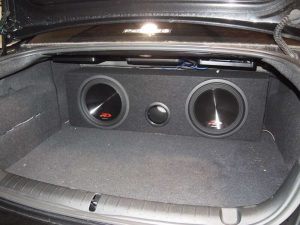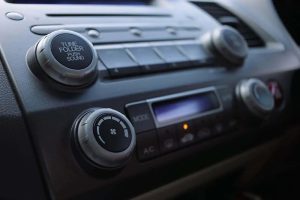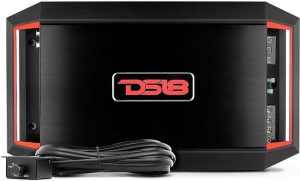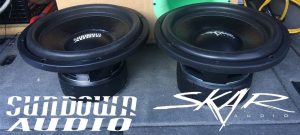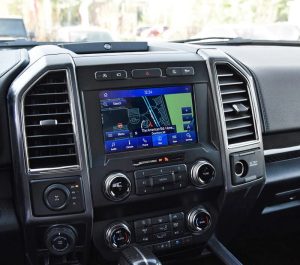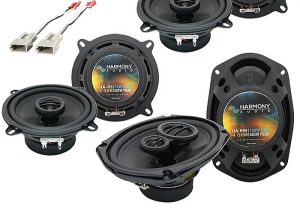Are you wondering if adding a subwoofer to your car audio system is worth it? Many drivers struggle with this question as they seek to improve their driving experience. The short answer is: it depends on your music preferences, listening habits, and budget. This guide explores everything you need to know about car subwoofers to help you make an informed decision.
Contents
- What Is a Car Subwoofer?
- Signs You Might Need a Subwoofer
- Benefits of Adding a Subwoofer to Your Car
- Types of Car Subwoofers
- Factors to Consider Before Buying a Car Subwoofer
- Common Misconceptions About Car Subwoofers
- How to Choose the Right Subwoofer for Your Car
- Installation Basics
- Living With a Car Subwoofer
- Conclusion: Do You Really Need a Subwoofer?
What Is a Car Subwoofer?
A car subwoofer is a specialized speaker designed to reproduce low-frequency sounds (bass) that regular car speakers can’t handle effectively. These low frequencies typically range from 20 to 200 Hz. Subwoofers come in various sizes, with the most common being 8, 10, 12, and 15 inches in diameter.
Subwoofers work with your existing car audio system to create a full-range sound experience. They handle the bass frequencies while allowing your other speakers to focus on mids and highs, resulting in clearer overall sound quality.
Signs You Might Need a Subwoofer
How do you know if your car audio system needs a subwoofer? Here are some telltale signs:
- You can’t hear the bass lines in your favorite songs
- Your music sounds thin or lacks depth
- You turn up the volume but still don’t feel the music
- Your door speakers rattle or distort when playing bass-heavy music
- You want to feel the impact of drums and bass guitars
- Your factory audio system sounds flat and uninspiring
If you’ve experienced any of these issues, a subwoofer might be the solution you’re looking for.
Benefits of Adding a Subwoofer to Your Car
Improved Sound Quality
When you add a subwoofer to your car audio system, you’ll notice an immediate improvement in sound quality. The subwoofer handles the low frequencies, which takes stress off your main speakers. This allows your regular speakers to focus on producing clear midrange and high frequencies without straining to reproduce bass.
The result is a more balanced sound with better definition across all frequencies. Even at lower volumes, you’ll hear details in your music that you might have missed before.
Enhanced Music Experience
Different music genres benefit from subwoofers in various ways:
- Hip-hop and rap: Feel the deep bass drops and beats
- Rock and metal: Experience the impact of kick drums and bass guitars
- Electronic music: Enjoy the full range of synthesized bass lines
- Classical music: Hear the subtle resonance of cellos and double basses
- Jazz: Appreciate the nuanced low-end from upright basses
A good subwoofer brings these elements to life, creating a more immersive listening experience during your commutes and road trips.
Reduced Distortion
Factory car speakers aren’t typically designed to handle substantial bass. When you push them to play low frequencies at higher volumes, they often distort, creating unpleasant sound quality.
A subwoofer specifically designed for bass frequencies prevents this problem. It produces clean, clear bass without distortion, even at higher volumes. Your music will sound better, and your factory speakers will last longer since they won’t have to work as hard.
Customizable Bass Levels
Most subwoofer systems include controls that let you adjust the bass level independently from the rest of your audio system. This means you can customize the amount of bass to suit different music genres, moods, or listening preferences.
Want to feel the full impact of that new hip-hop track? Turn up the bass. Listening to a podcast or audiobook? Turn it down. This flexibility ensures your audio system adapts to whatever you’re listening to.
Types of Car Subwoofers
Component Subwoofers
Component subwoofers are individual speaker drivers that require separate enclosures and amplifiers. They offer the most flexibility for custom installations and generally provide the best sound quality. If you want to build a custom system or have specific performance goals, component subwoofers are the way to go.
Enclosed Subwoofers
These are component subwoofers pre-mounted in enclosures. They come ready to install but still require a separate amplifier. Enclosed subwoofers save you the trouble of designing and building a box, making installation more straightforward while still delivering excellent sound quality.
Powered Subwoofers
Powered (or active) subwoofers combine the subwoofer, enclosure, and amplifier in one unit. They’re the most convenient option for adding bass to your system without extensive modifications. While they might not match the raw performance of separate components, they offer an excellent balance of convenience, space efficiency, and sound quality.
Vehicle-Specific Subwoofers
These subwoofers are designed to fit particular vehicle models, often integrating seamlessly with factory locations or unused spaces. They’re perfect for maintaining your car’s stock appearance while improving the sound system.
Factors to Consider Before Buying a Car Subwoofer
Available Space
One of the most important considerations is how much space you can dedicate to a subwoofer. Measure your available space carefully before shopping. Remember that larger subwoofers generally produce deeper bass but require more space.
Common installation locations include:
- Trunk
- Under seats
- Rear deck
- Cargo area
- Custom-built enclosures
If space is limited, consider compact powered subwoofers or vehicle-specific solutions designed to fit in tight spaces.
Your Budget
Car subwoofers come in a wide price range. Entry-level options start around $100-200, while high-end systems can cost $1,000 or more. Consider these approximate price ranges:
- Basic powered subwoofer: $100-300
- Mid-range component system: $300-700
- High-end custom setup: $700-1,500+
Remember to factor in installation costs if you’re not doing it yourself. Professional installation typically ranges from $100-500 depending on complexity.
Sound Preferences
Your music taste plays a crucial role in selecting the right subwoofer. If you primarily listen to bass-heavy music like hip-hop or electronic dance music, you might want a larger subwoofer that can produce deeper bass. For rock, pop, or jazz, a smaller subwoofer might provide the perfect balance.
Consider these general guidelines:
- 8″ subwoofers: Tight, punchy bass, less low-end extension, good for rock and jazz
- 10″ subwoofers: Good balance of punch and depth, versatile for most music
- 12″ subwoofers: Deep bass with good impact, ideal for hip-hop and electronic music
- 15″ subwoofers: Maximum low-frequency extension, best for bass-heavy genres
Power Handling
Pay attention to the power handling capabilities of any subwoofer you consider. You’ll see two power ratings:
- RMS power: The amount of continuous power the subwoofer can handle
- Peak power: The maximum power the subwoofer can handle in short bursts
Always match your subwoofer to an amplifier based on RMS power ratings, not peak power. A good rule of thumb is to choose an amplifier that provides 75-150% of the subwoofer’s RMS power rating.
Common Misconceptions About Car Subwoofers
“Subwoofers Are Just for Extremely Loud Bass”
Many people associate subwoofers with booming bass that shakes the neighborhood. While subwoofers can produce loud bass, their primary purpose is to accurately reproduce low frequencies that regular speakers can’t handle. A properly integrated subwoofer adds depth and dimension to your music without being overwhelming.
“Subwoofers Take Up Too Much Space”
While traditional subwoofer boxes can be bulky, many modern options are designed for minimal space impact. Compact powered subwoofers, underseat models, and vehicle-specific options can add significant bass without sacrificing much cargo space.
“Subwoofers Drain Your Car Battery”
A properly installed subwoofer system won’t drain your battery during normal operation. However, playing very loud music with the engine off for extended periods can drain your battery. If you’re concerned about power consumption, consider adding a capacitor to your system or upgrading your alternator for high-powered setups.
How to Choose the Right Subwoofer for Your Car
Consider Your Car Size
The size of your vehicle affects the type of subwoofer that will work best:
- Compact cars: Consider space-saving options like powered subwoofers or 8-10″ models
- Sedans: 10-12″ subwoofers often provide a good balance of performance and space efficiency
- SUVs and trucks: Larger vehicles can accommodate bigger subwoofers (12-15″) or multiple subwoofers for maximum impact
Match With Your Existing System
Your subwoofer should complement your existing audio system. If you have a modest factory system, a small powered subwoofer might be sufficient. If you’ve upgraded to a high-power aftermarket system, you’ll want a subwoofer that can keep pace.
Sound Quality vs. Volume
Decide what’s more important to you: sound quality or maximum volume. Some subwoofers focus on accurate, musical bass reproduction, while others emphasize sheer output level. Higher-quality subwoofers typically offer a better balance of both attributes.
Installation Basics
DIY or Professional Installation?
Installing a subwoofer can range from simple to complex:
- Powered subwoofers: Often manageable for DIY enthusiasts with basic tools and knowledge
- Component systems: Require more technical skill, including running power wire from the battery, installing an amplifier, and building or mounting enclosures
- Custom installations: Best left to professionals who have the tools and expertise for seamless integration
If you’re unsure, professional installation ensures optimal performance and prevents potential damage to your vehicle’s electrical system.
Essential Accessories
When budgeting for your subwoofer, don’t forget these necessary accessories:
- Amplifier (if not using a powered subwoofer)
- Wiring kit (power, ground, and signal cables)
- Installation materials (mounting hardware, sound deadening material)
- Bass control knob (for convenient adjustment while driving)
Living With a Car Subwoofer
Adjusting Bass Levels for Different Situations
The beauty of having a subwoofer is the ability to adjust it based on your situation:
- Daily commuting: Moderate bass levels for enjoyable but not fatiguing listening
- Solo road trips: Turn it up for a more immersive experience
- Passengers onboard: Adjust based on their preferences (not everyone appreciates strong bass)
Many systems include remote bass knobs that allow you to make these adjustments without accessing your trunk or adjusting the main stereo.
Maintaining Your Subwoofer
To keep your subwoofer performing at its best:
- Avoid playing at maximum volume for extended periods
- Keep the subwoofer and enclosure clean and free of debris
- Check connections periodically to ensure they remain tight
- Protect your subwoofer from extreme temperatures when possible
- Break in new subwoofers gradually by playing them at moderate volumes for the first 10-20 hours
Conclusion: Do You Really Need a Subwoofer?
After considering all these factors, we return to the original question: do you need a subwoofer in your car?
You’ll benefit from a subwoofer if:
- You care about sound quality and want to hear your music as the artist intended
- Your current system lacks depth and impact when playing music
- You listen to bass-heavy music genres
- You spend significant time in your car and value an immersive audio experience
A subwoofer might not be necessary if:
- You primarily listen to spoken content like news or podcasts
- You rarely play music in your car
- You’re satisfied with your current audio system
- Your budget or space constraints are very tight
The decision ultimately comes down to your personal preferences and priorities. For many music enthusiasts, a well-chosen and properly installed subwoofer transforms the driving experience from mundane to magnificent.
Whether you choose a simple powered unit or a custom-built system, adding a subwoofer to your car audio setup is one of the most impactful upgrades you can make. Your music will sound fuller, clearer, and more enjoyable—making every drive a better experience.

